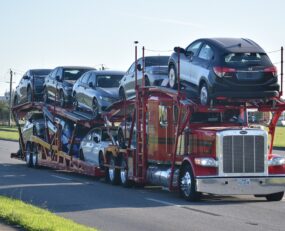
The Automotive market in Europe is rebounding. What does that spell for the supply chain?
The vehicle-handling ports in Europe have been facing various challenges in recent years, including the pandemic, chip shortages, and disruptions caused by the Ukraine conflict. In 2022, transport and labour shortages were prominent, continuing into 2023, perhaps lasting several more years. Many ports have struggled with inconsistent volumes due to chip shortages and high numbers of unfinished vehicles. These issues are compounded by severe deficits in road, rail, and ro-ro (roll-on/roll-off) capacity across Europe and have led to increased dwell and lead times. Larger ships and a surge in electric vehicle imports from China have further complicated the situation.
Despite these challenges, and the eurozone experiencing a technical recession, production and sales volume in many European markets have been recovering.
According to the ACEA, in May 2023, the EU car market saw a significant increase in passenger car registrations, reaching nearly 1 million units, marking an 18.5% growth compared to the previous year. This growth trend has continued for ten consecutive months. Most EU markets, including the four largest, namely Italy, Germany, France, and Spain, witnessed double-digit gains during this five-month period, with the strongest gains in Italy (+23.1%), Germany (+19.2%), and France (+14.8%). However, compared to May 2019, the sales volume is still 23% lower in the EU.
According to AL*, some major ports in Belgium and Germany have had to effectively close to additional volumes. To alleviate congestion in ro-ro facilities and vehicle-handling terminals, some car manufacturers have resorted to accelerating shipments of vehicles in containers, which is typically a niche solution.
For now, this pressure on capacity is expected to persist, as it will take a significant amount of time to replenish ro-ro, trucking, and rail transportation capacities. This is exacerbated by increasing volumes from China and new requirements for EVs, supply chains will undoubtedly have to adapt.
Battery EV registrations in the EU experienced a significant boost in May, with a 70.9% increase compared to the previous year. The Netherlands, Sweden, France, and Germany recorded impressive percentage gains. Hybrid electric cars also continued to grow, with sales increasing by 27.6% in May, driven by growth in the four largest EU markets, and becoming the second-most popular choice for new car buyers. However, in terms of market share, petrol cars still have the largest portion, constituting 36.5% of the market.
Overall, the EU car market has shown positive growth in recent months, but there are challenges related to capacity shortages, particularly in transportation and labour, as well as the increasing demand for electric vehicles. Supply chains have to undergo significant changes in order to accommodate this shift in demand, perhaps increasing logistics costs for Vehicle shippers and stakeholders.
*Automotive Logistics